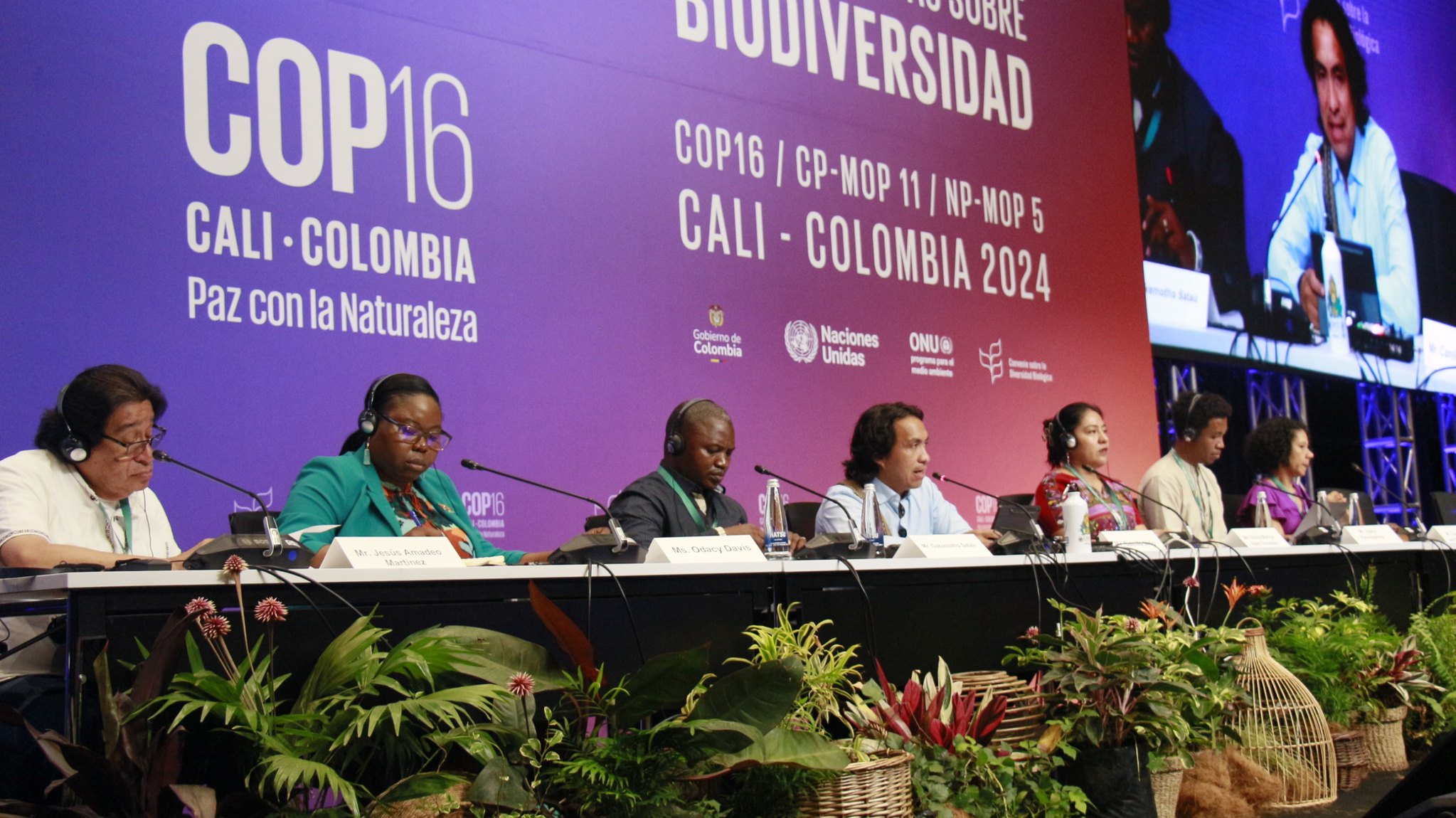UN Biodiversity Conference Lets Indigenous Lead
Sara Kennel, climate advocacy intern, shares the outcomes of the UN conference on biodiversity. The following article was published in the January – February 2025 issue of NewsNotes. In the very last hours of the 16th bi-annual UN Biodiversity Conference (COP16) in Cali, Colombia, a celebration ensued with enthusiastically raised hands, tears, hugs, and chants…
Sara Kennel, climate advocacy intern, shares the outcomes of the UN conference on biodiversity.
The following article was published in the January – February 2025 issue of NewsNotes.
In the very last hours of the 16th bi-annual UN Biodiversity Conference (COP16) in Cali, Colombia, a celebration ensued with enthusiastically raised hands, tears, hugs, and chants of victory when the parties affirmed the creation of a subsidiary body of Indigenous peoples and local communities. This body will be endowed with the authority to make decisions on nature conservation.
The participation and leadership of the Indigenous people had been a primary focus of advocacy for the Maryknoll delegation to the conference, as explained in the last NewsNotes edition. The Maryknoll delegation included Maryknoll Sisters Dee Smith and Margaret Lacson and Maryknoll Office for Global Concerns senior program officer for Integral Ecology, Lisa Sullivan. Juan Felipe Martinez, the Executive Secretary of the Colombia chapter of the Pan-Amazonian Ecclesial Network (REPAM) and an advocate for the protection of Indigenous land defenders, also represented Maryknoll.
Indigenous groups steward over 80 percent of the remaining biodiversity on the planet, making it imperative to respect and protect both their right to stay on their land and to assume leadership in its protection. Now, for the first time at the UN, Indigenous peoples will have the formal power to influence decisions within the UN Biodiversity Convention.
Not all the Maryknoll delegation’s hopes for the conference were met, however. Two years ago, the Biodiversity Conference in Montreal achieved a landmark agreement which committed countries to conserve 30 percent of their lands and water by 2030, an agreement colloquially known as the 30 by 30 Biodiversity Plan. This year, the conference was tasked with fulfilling the framework by financing efforts and following through on commitments. The conference fell short of an agreement on the 30 by 30 Biodiversity Plan financing, and the decision was punted to “Resumed Meetings” of the Biodiversity Conference, which will take place in February of 2025.
The Maryknoll team contributed to the conference by organizing an event titled “Biodiversity 2.0: Strengthening Indigenous and Local Community Partnerships to Halt Biodiversity Loss.” Amazonian and Maasai land protectors shared powerful insights on how biodiversity conservation efforts can displace them, abuse their human rights, and misunderstand their role. They emphasized that sustainable approaches are ones that enhance biodiversity while respecting human rights.
Faith representation at the conference was exceptional, with groups collaborating in a Faiths for Biodiversity Network, which delivered a study to the conference president. The study, “Uniting for Nature: Faiths at the Forefront of Kunming Montreal Global Biodiversity Framework (KMGBF),” demonstrates how faith groups protect biodiversity. Other faith initiatives included an invitation from the Archbishop of Cali to strategize on Catholic engagement with biodiversity, and a Pax Christi International event honoring Sr. Gladis Montesinos for her work with Tsimane Indigenous people.
Notable conference achievements included:
The Cali Fund. A new fund was created to channel voluntary contributions from the private sector to compensate countries for the commercial use of genetic material from plants and animals. This fund supports the Indigenous and local communities, promoting an inclusive, rights-based approach to conservation.
Synergizing climate and biodiversity. Countries agreed to address the climate and biodiversity crises together, aiming to build a bridge between the two UN Conventions on climate and biodiversity together.
The conference shortcomings included:
No meaningful protections for ecology leaders. Latin America is responsible for 85 percent of all land defender killings in 2023, with 79 killings in Colombia alone. The conference discussed better protections and enhancing negotiations for land defenders, but no new mechanisms for accountability were conceived.
A failure to agree to global biodiversity finance. Tensions were high in discussions of a proposed global biodiversity fund under the UN’s authority. Financial systems perpetuate biodiversity loss, and regulations are needed to align finance with biodiversity goals.
Few national plans for 30 by 30. Of the 196 countries committed to the 30 by 30 conservation plan, only 44 had realistic National Biodiversity Plans that would move those countries to their goal. That said, 108 countries announced other, new conservation targets and 35 of those countries submitted National Biodiversity Strategies and Action Plans to meet them. This sets a hopeful stage moving forward.
On a local level, people can make an impact by tending gardens, planting biodiverse crops, and supporting native species in neighborhoods or parishes. Despite the shortcomings of the Biodiversity Conference this year, hope pervades among the people on the ground.
Photo of UN COP16 Panel, Nature and Culture Summit on October 28, 2024, by the UN via Flickr.

